Quest for Fiber:
Alpaca and Acrylic and Títeres
This post is written especially for my fiber-loving friends. As many of you know, my original intention for traveling to Peru was to experience the fiber arts—especially knitting and spinning.
Arequipa has been a bit of a disappointment as far as searching for handcrafted knitting and spinning. The two largest commercial mills for alpaca fiber in Peru are located here, and I thought it would be a good place to engage in knitting with the women who do the work. Well, I was wrong. However, I am far from sorry that I made Arequipa my first stop in Peru. I have been privileged to live with Manuel and Adela for over a month. They are amazing hosts and have taken such good care of me as I adjusted to this new culture. Besides Adela is an incredible cook! I have also been able to adjust to living at a medium-high altitude (7500 feet) before moving on to the Puno area (12,500 feet).
On my third day in Arequipa, Adela (my host) took me to Michell’s Fiber Mill. There is an outlet store there with all kinds of alpaca yarn at very good prices.
Adjacent to the mill is Mundo Alpaca, a museum showing the process of preparing alpaca fleeces for market—both by hand and by machine.
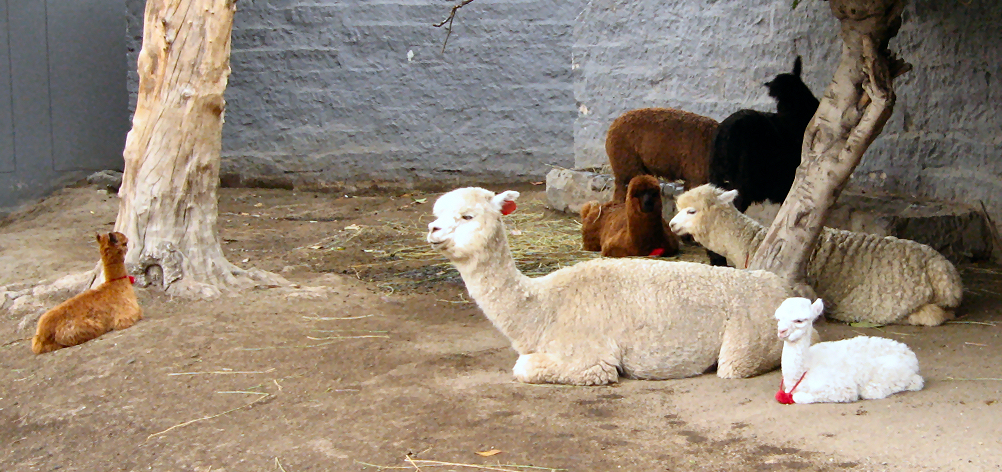
When the fleeces arrive at the mill, they must be manually sorted and classed by color, origin, quality, and length of fiber. This difficult process can only be done by expert women who use classing techniques handed down from one generation to the next since the pre-Hispanic era. Sorting cannot be mechanized, as the variables involved can only be assessed by experienced human hands and eyes. Two women were sorting these piles of fiber.
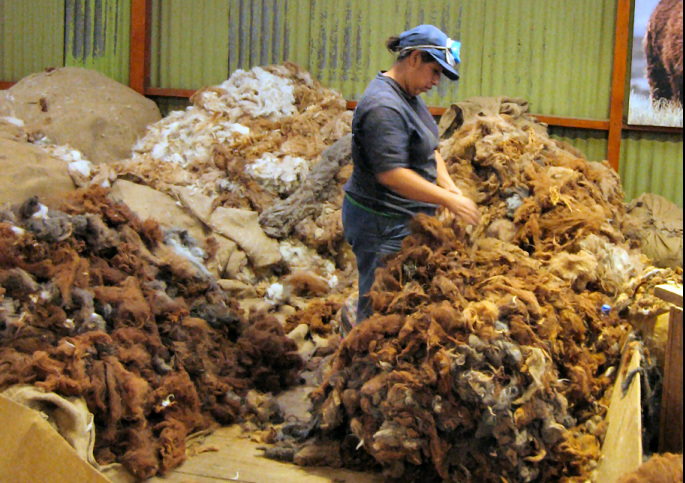
The dirt (tierra), straw (pajas), bristly hairs(cerda), and other foreign matter have to be removed from the fleeces:
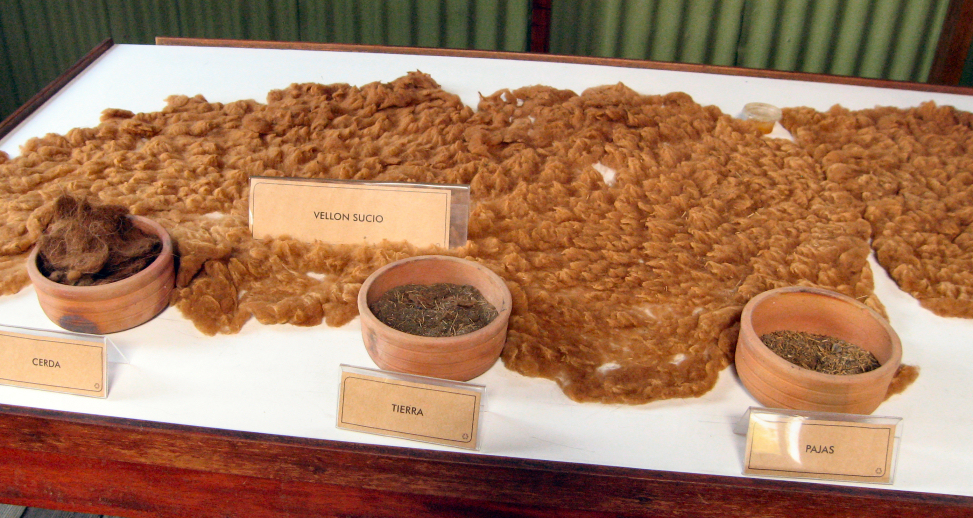
They are then washed carefully and are ready to be spun and dyed. Here are some of the natural dye materials:.
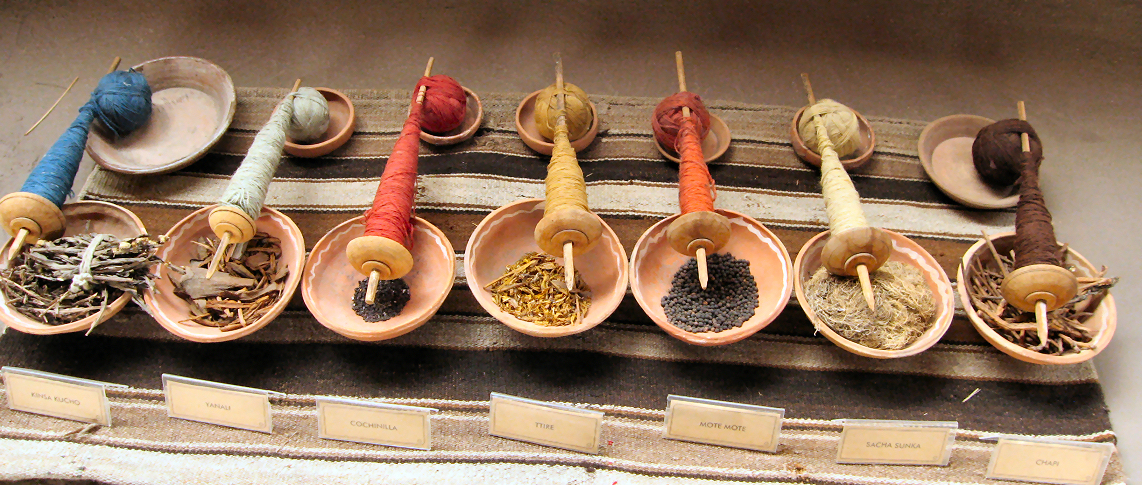
On my first visit to a LYS (local yarn shop) I found this lovely green crochet yarn. Although it is acrylic, I bought it anyway just because I like the shiny color and it did knit up into some lovely lace.
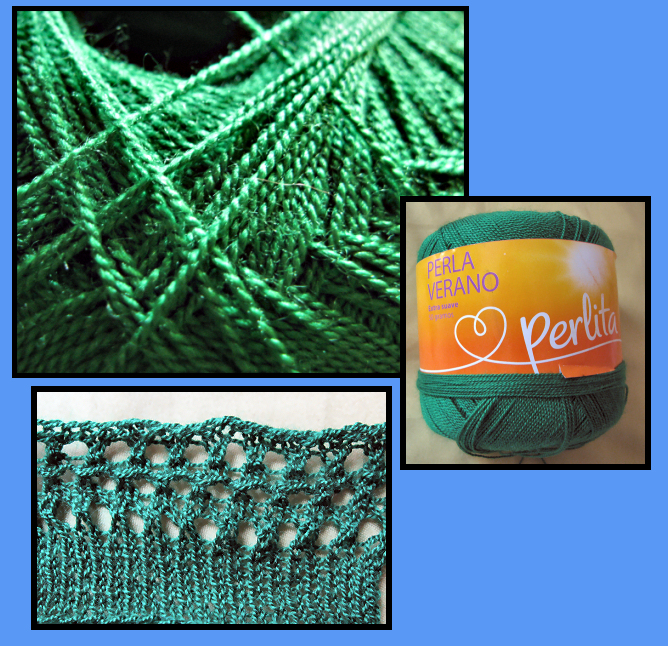
Later, on the street, I found this bag of small balls of acrylic yarn and knitting needles. The vendor was selling a variety of unrelated items—rope, hardware, laundry soap, webbing, flyswatters, shoe inserts—and he and his friends were sitting just off the sidewalk playing cards. I have passed by there several time since then, and after about 3:00 pm, they are always passing the afternoon at their card games.
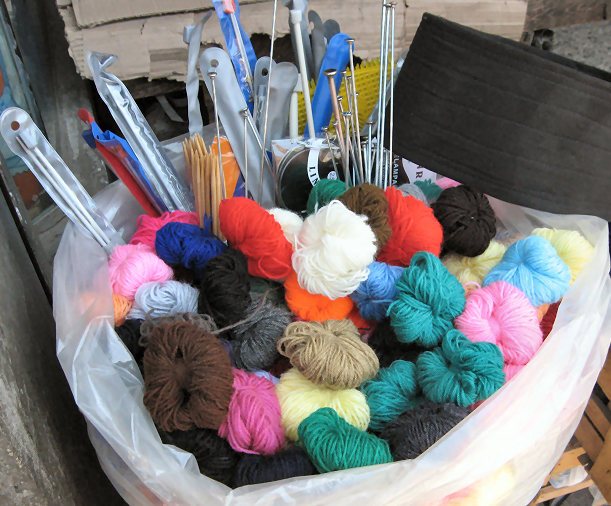
The balls were 3 for a sole (about 35 cents), so I bought 6, just for the fun of it. I had been reading about the women of Chucuito (south of Puno), who are famous for their títeres de dedo (finger puppets) and I thought that before I visit there I might try my hand at making some.
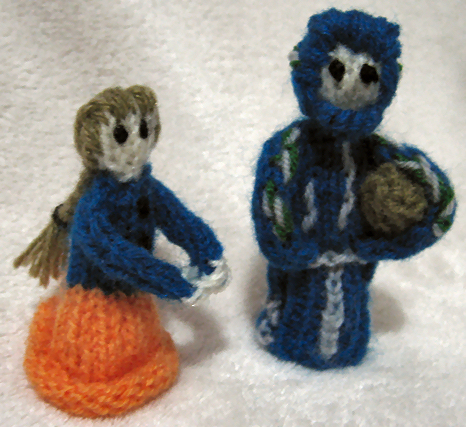
A few days later, I successfully created a woman and (because it was the morning of the Superbowl) a Seattle Seahawks player for my friends who are fans.
Fast forward to February 16. As it turned out, I was very glad that I had practiced. Indeed, when I came to Chucuito’s Sunday market, every little handcraft stall had finger puppets for sale. I bought 2-3 from as many stalls as I could and at the end of the line, I met this cheerful woman who was knitting a little stuffed alpaca using a punto de arroz (rice stitch).
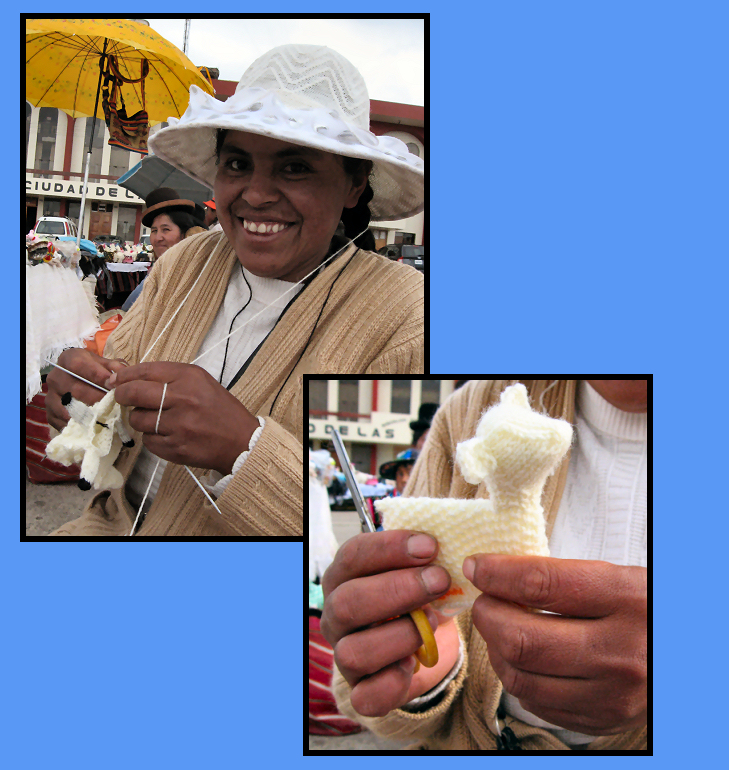
I told her and her friends that I also knitted and showed her some socks I was working on. She invited me to sit with them for a while and knit. I was prepared!! I had brought the socks I had been working on, but I also had my little balls of acrylic yarn and I started a little finger puppet.
Other women gathered around as I cast on and exclaimed “Sabes!” (“You know!) It was so sweet how, as I completed my puppet (after almost three hours!), they all remarked on it, even though they make them by the dozens. I gave them the puppets I had made the previous week and the one I had just made and they acted like I had given them the prize of the month!
I have now finally met one of my intentions for my trip to Peru—knit with the women here. I will be returning to Chucuito in March to stay for a while and I hope to meet back up with my new friends.
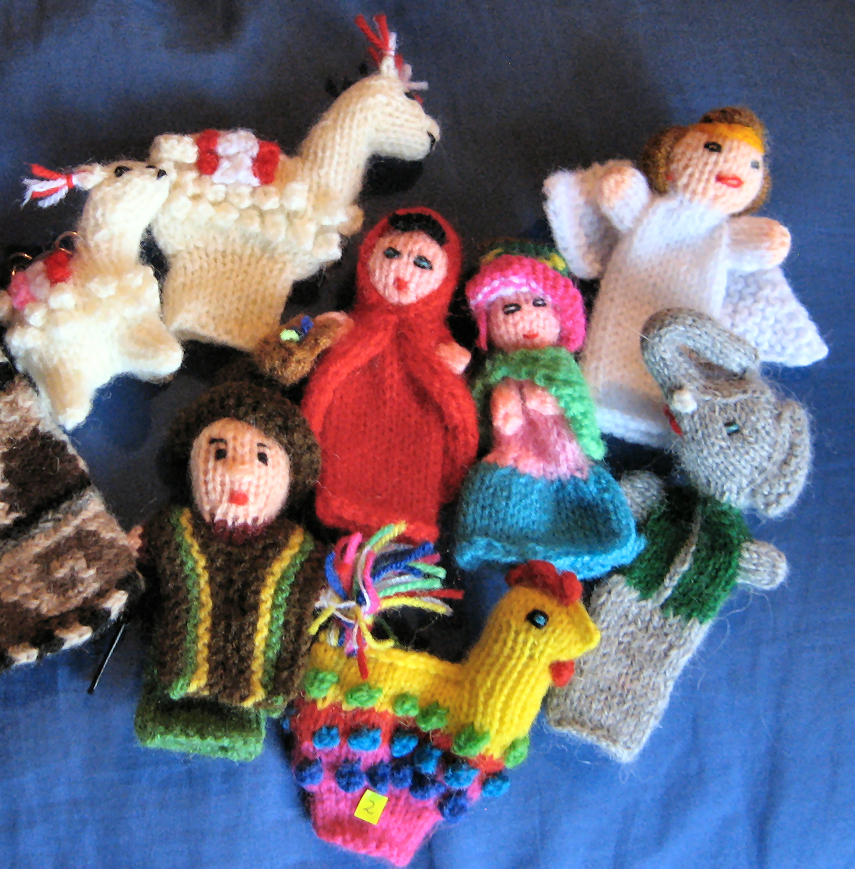
Other Blog Posts You May Find Interesting
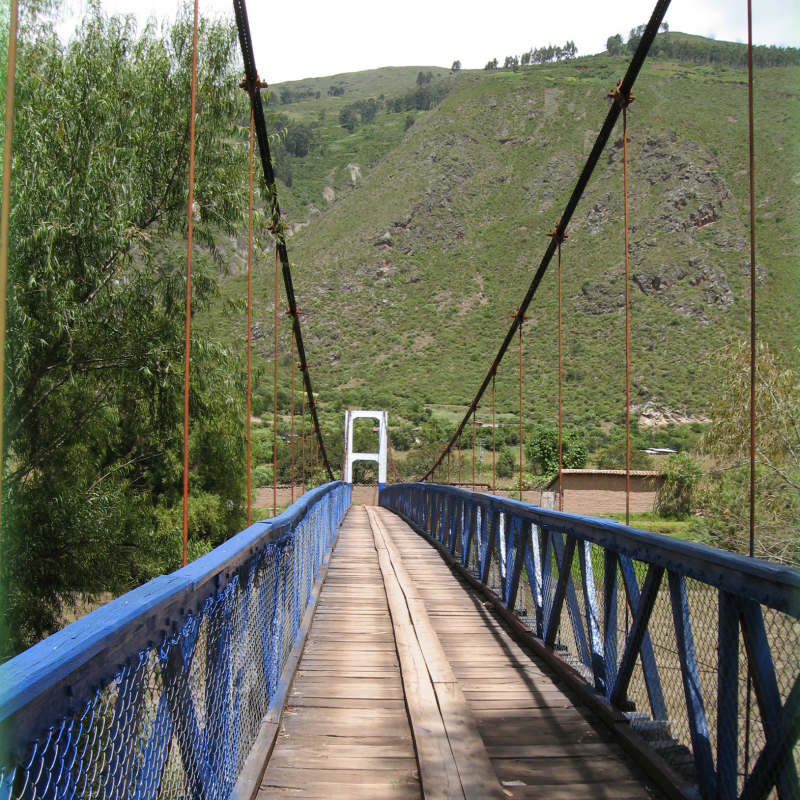
A Ship in the Harbor is Safe…
On Saturday, the day after I arrived in Arequipa, I decided that I would go and explore the city on my own….it was quite an experience as I learned how to dodge taxis and try not to let the sights and sounds overwhelm me.
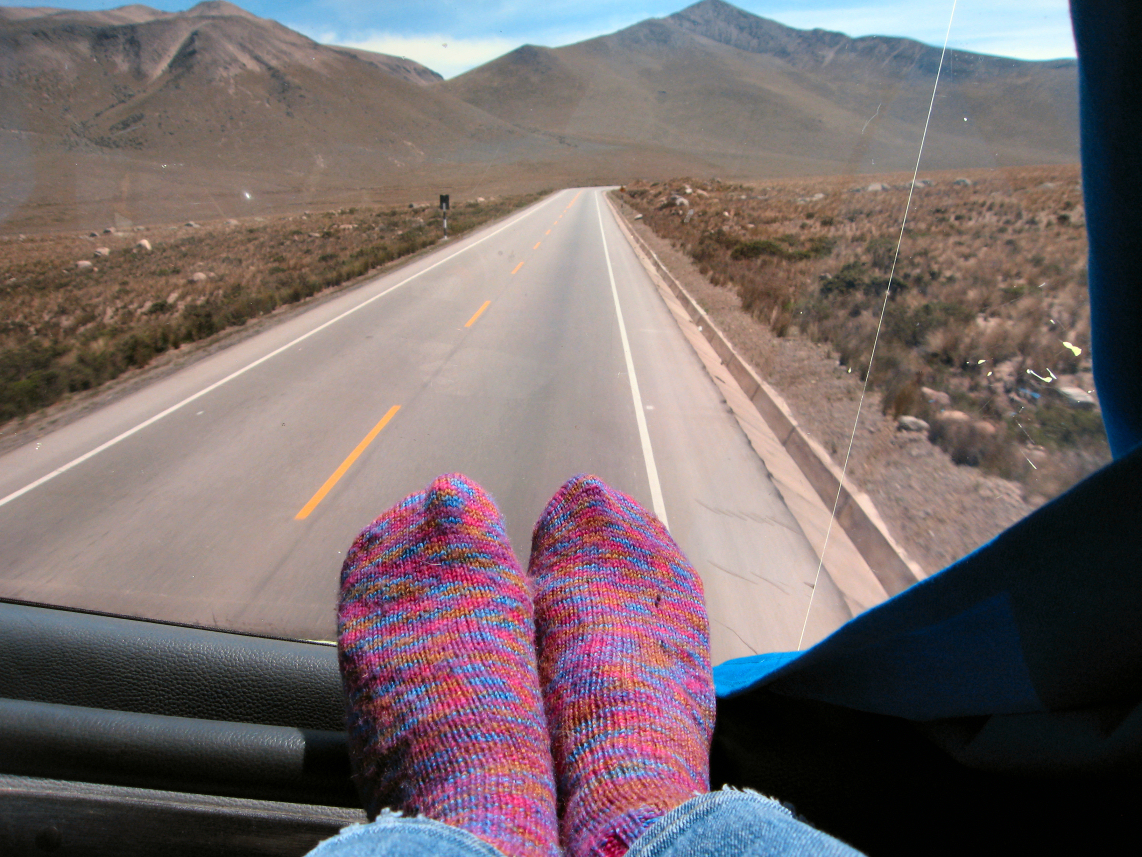
Estoy en Puno!
The south of Peru reminds me of some of the landscapes you see in the Southwest. Miles and miles of open desert country, with an occasional river running through.
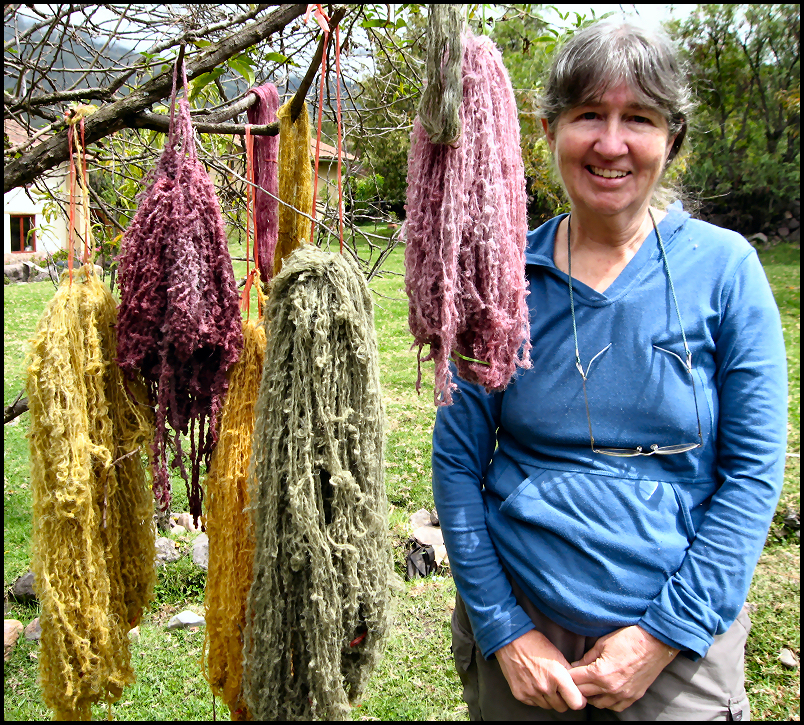
Quest for Fiber: Colores! Colores!
Since I arrived in Calca, I have been trying to find a natural dyeing workshop to learn how the Quechua traditionally dyed their fiber.
1 thought on “Quest for Fiber: Alpaca and Acrylic and Títeres”
Glad you are enjoying yourself and finding knitting companions!